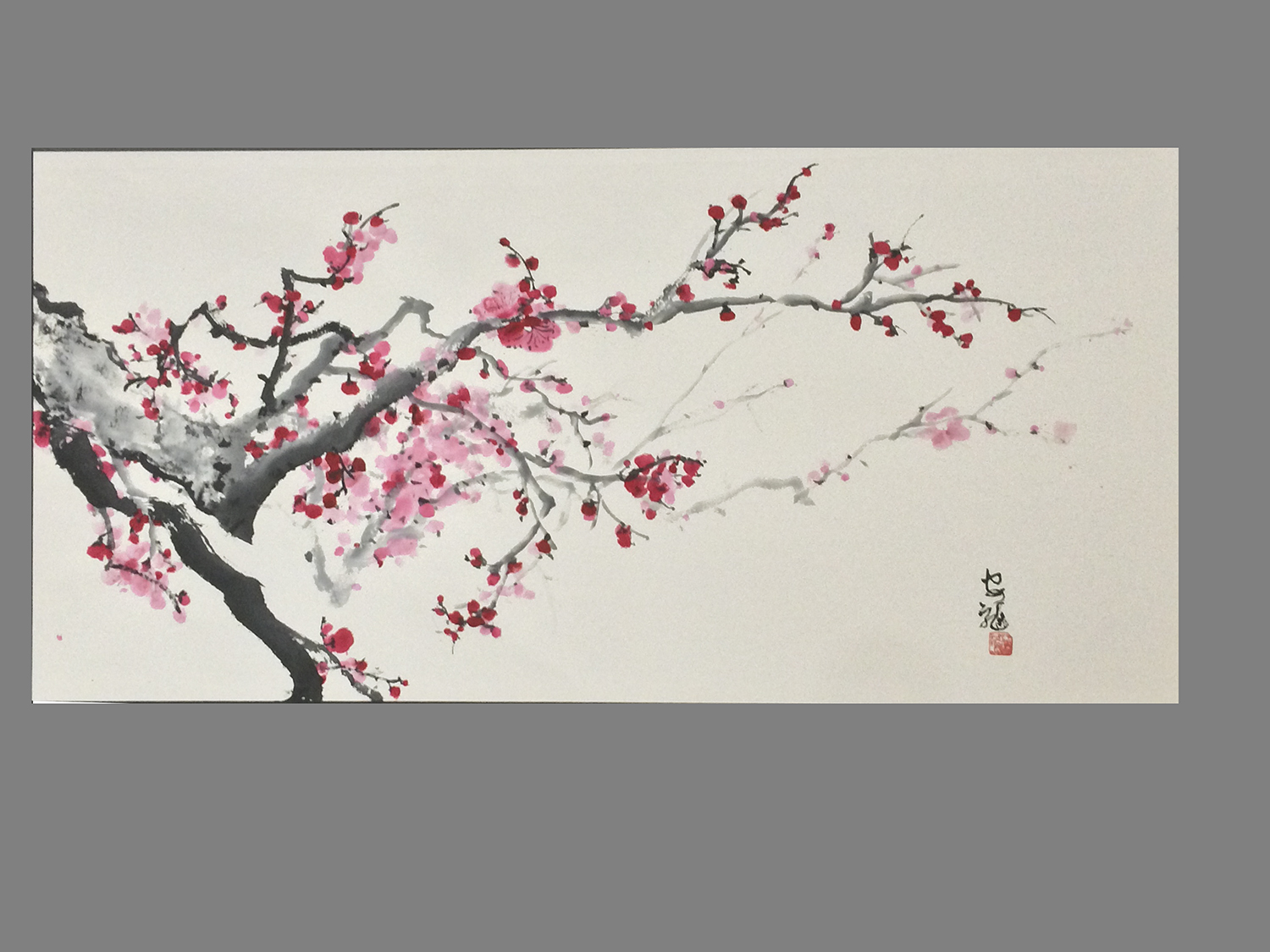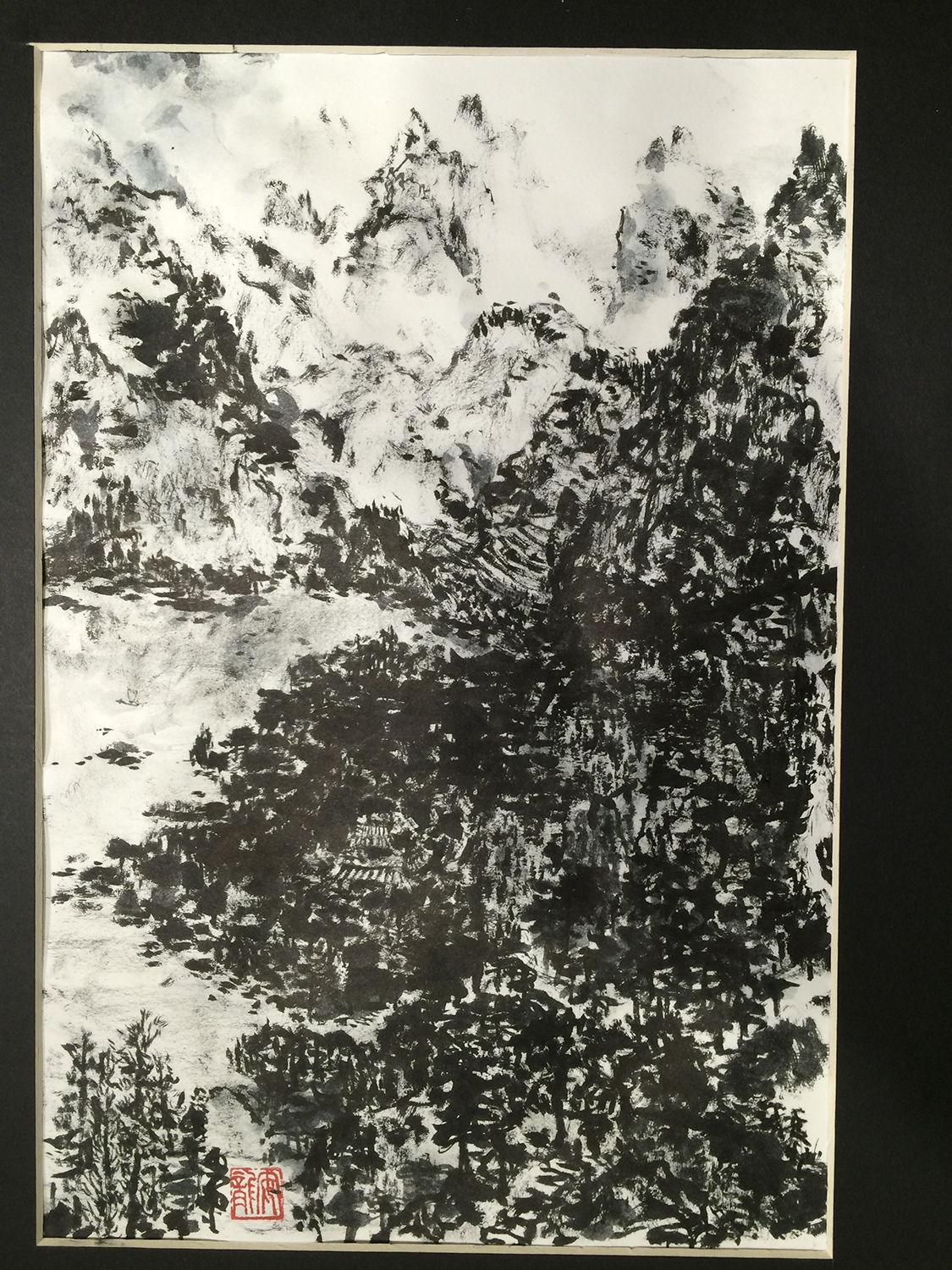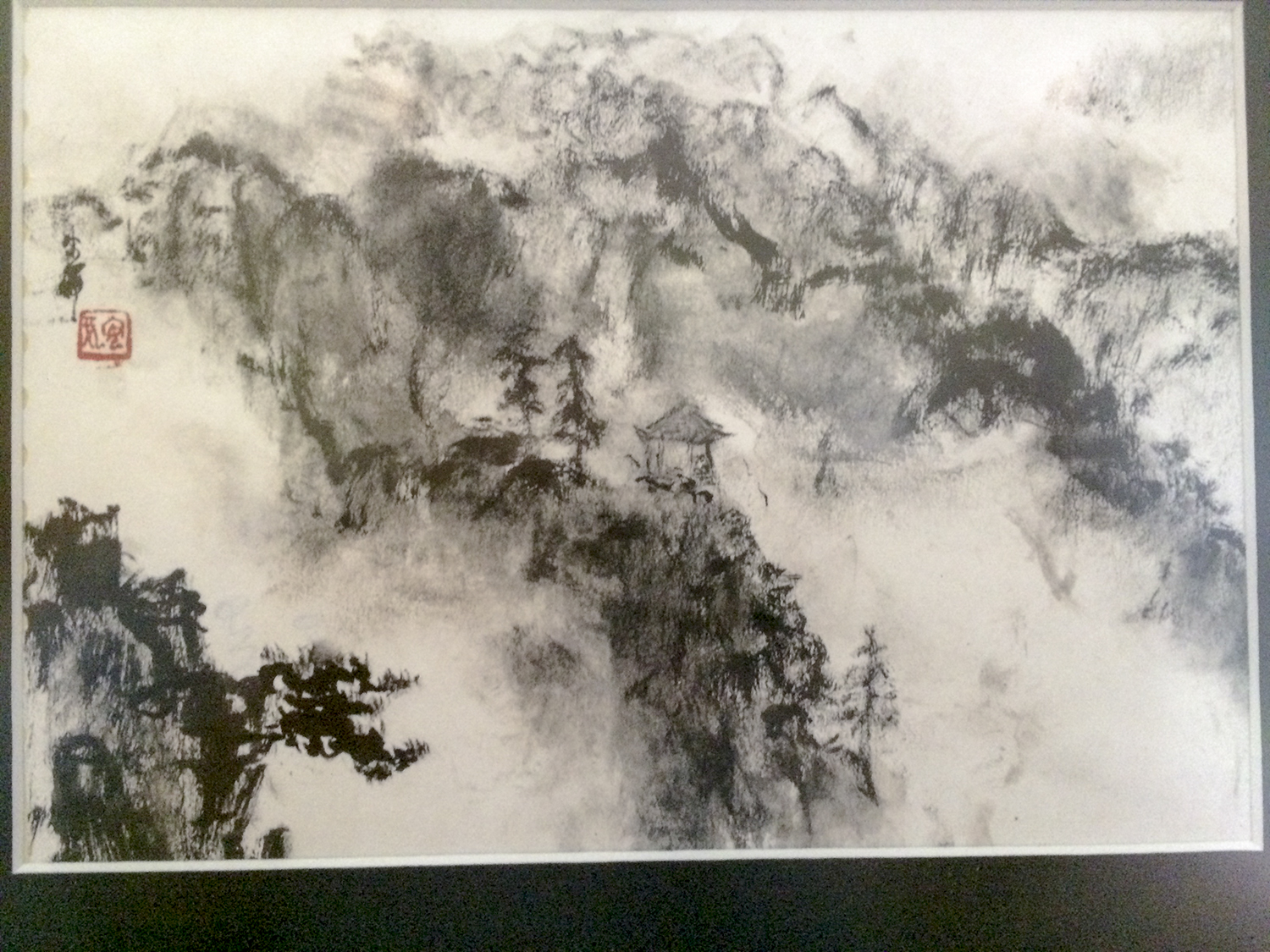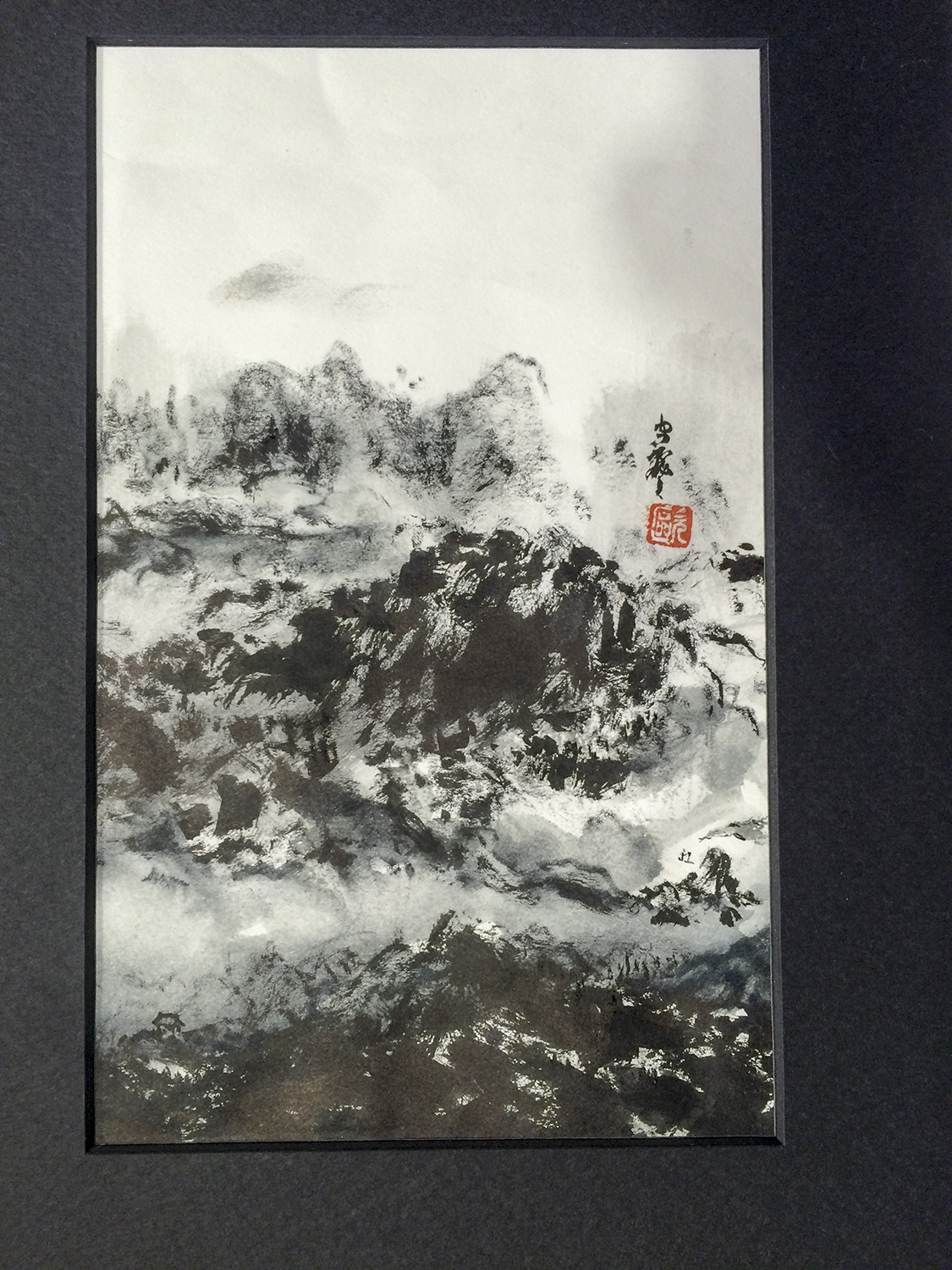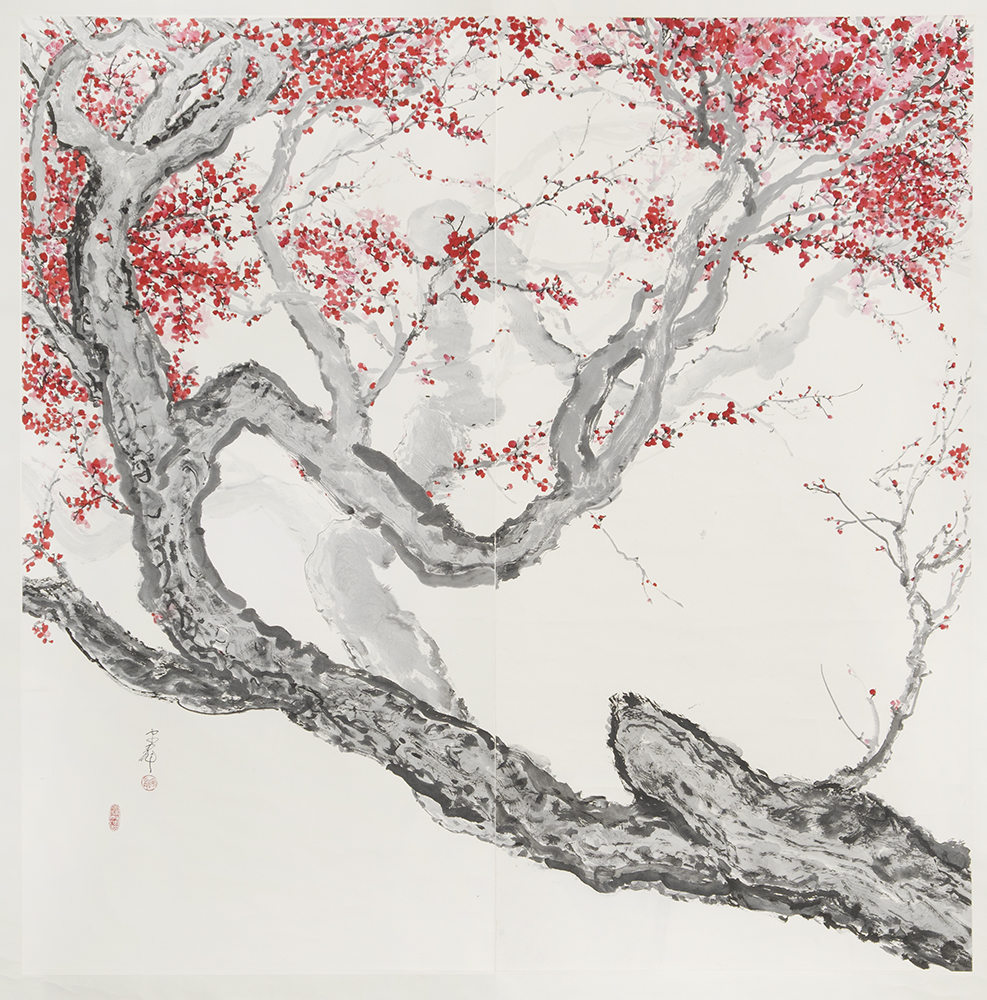Blog posts
(July 10, 2015)
Photo of most recent work (64 x 30 cm.):
Click on image to fit the whole work on the screen.
(July 8, 2015)
Below are some new and renewed smaller works. Click on each image to fit the whole work on the screen. The rectangular plum blossom is a recent work (58 x 25.5 cm.), the circular one below it a bit older (27.5 cm. diam.) The second two go back to Hong Kong and were considered completed then, but recently I added new lines and dots (23.5 x 18 cm. and 17.5 x 26 cm.) (note: The vertical work photographed as lighter and more transparent that it is.) The last two works are older, very small ones that just seemed worth publishing (17.5 x 12 cm. and 11 x 15 cm.)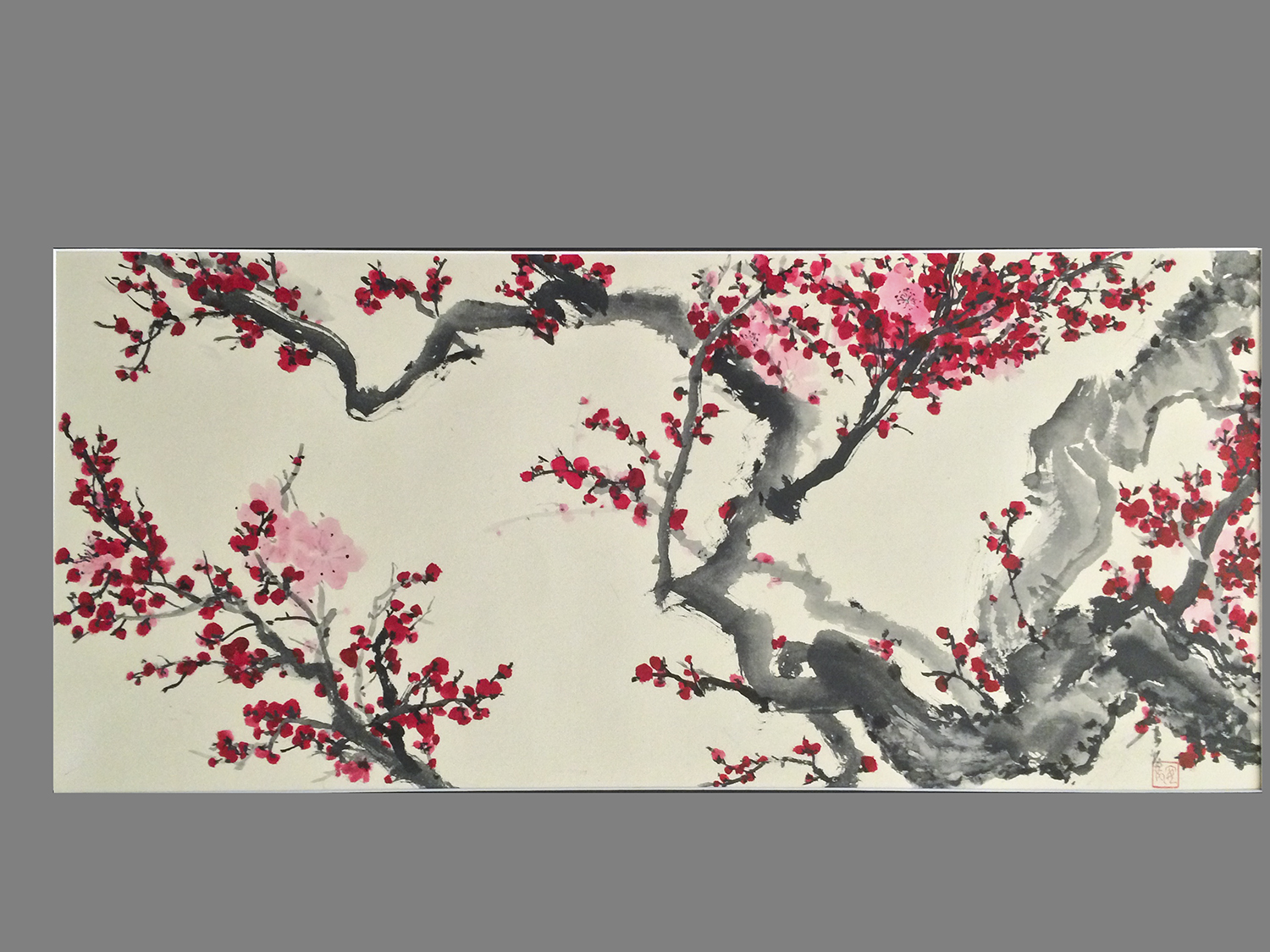
(June 14, 2015)
In recent months, thinking of meihua I saw on Purple Mt. in Nanjing,
I added lots of dots to old #139 (137 cm. sq., 53″ sq.), and now it looks like this:
(click on image for best view)
painting (2009) revised (- dots lines added 2015) Helen & Kevin May 2015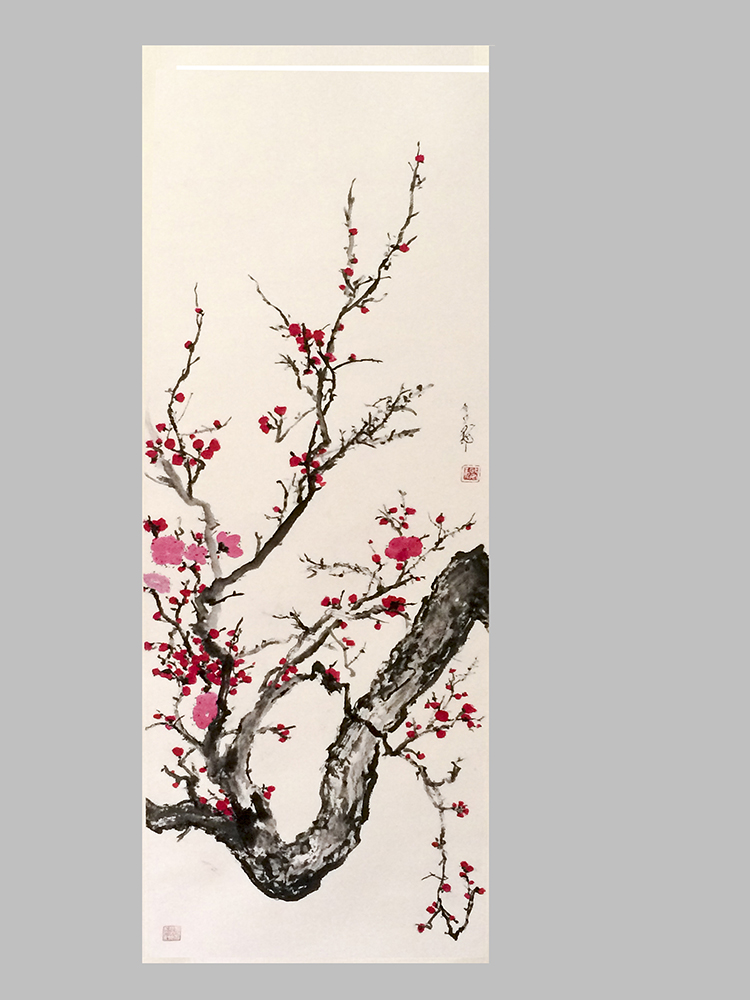
———-
doubly flattered (May 2015) Yesterday, I was happily reminded of what I was told by my friend, the excellent landscape painter Wang Shuxia: when the art theorist and critic Prof. Chen Chuanxi (陈传席) visited him, he praised a work of mine that is hanging by the entry (“你看,构图和意境都好,笔墨的浓淡相宜,用笔古拙有趣。画得好”*). Not many people see my work, so this was nice on two counts — first, to receive the compliment from Prof. Chen, and, second, to learn that Wang Shuxia hangs one of my paintings in his home. —— *(very roughly translated: “Mood and composition are good. Uses traditional ink brush with straightforward/simple shading. An interesting and good painting.”)
——— a bit of news (March 2014) After eight wonderful years here in Hong Kong, surrounded by great friends, the exciting city, easy access to China and a stepping stone to all of Asia, Sue’s job change causes me sadly to be leaving for New York in late May. I will be in Taian and Qingdao to see my close friends there in mid-April. A Tokyo trip is also being planned. Much packing to do. Then on to New York. I will probably not update this site with replacement comments and the new paintings until some time after arriving in New York. ——————————– ——————————– I placed some poems below, old favorites. They came to mind at this moment of many changes. 蘇軾 (1037-1101) 和子由澠池懷舊 人生到處知何似?應似飛鴻踏雪泥。泥上偶然留指爪,鴻飛那復計東西。 老僧已死成新塔,壞壁無由見舊題。往日崎嶇還記否,路長人困蹇驢嘶。 poem by Su Shi (1037-1101) What is life like? — human life everywhere? It must be like a wild goose flying. then treading slush of melting snow. By chance in the slush it will leave the marks of its claws. Then it flies off — how can we tell whether eastward or westward? The old monk has died; a new pagoda is made; On his cell’s fallen walls we’ve no way to see poems written there long ago. But do you still remember the rocky roads we traveled then to meet him?– How the journey was long and we were worn out and my lame donkey brayed? (trans. Stephen Owen, Traditional Chinese Poetry and Poetics) In the poem Su Shi rapidly moves through a series of images: Life? The slush has melted; the goose flown off; the monk died; the walls crumbled, the poems lost, the rocky roads with no footprints; but we do remember things, our pain and the echoing bray of the donkey. —————————— —————————— Below, both Milosz’s longer poem and the concise, gem-like Issa haiku he cites within [in quotation marks] parallel Su Shi’s poem in many ways: “Reading the Japanese Poet Issa (1762-1826)” by Czeslaw Milosz “A good world — dew drops fall by ones, by twos” A few strokes of ink and there it is. Great stillness of white fog, waking up in the mountains, geese calling, a well hoist creaking, and the droplets forming on the eaves. Or perhaps that other house. The invisible ocean, fog until noon dripping in a heavy rain from the boughs of the redwoods, sirens droning below on the bay. Poetry can do that much and no more. for we cannot really know the man who speaks, what his bones and sinews are like, the porosity of his skin, how he feels inside. and whether this is the village of Szlembark above which we used to find salamanders, garishly colored like the dresses of Teresa Roszkowska, or another continent and different names. Kotarbínski, Zawada, Erin, Melanie. No people in this poem. As if it subsisted by the very disappearance of places and people. “A cuckoo calls for me, for the mountain, for me, for the mountain” Sitting under his lean—to on a rocky ledge listening to a waterfall hum in the gorge, he had before him the folds of a wooded mountain and the setting sun which touched it and he thought: how is it that the voice of the cuckoo always turns either here or there? This could as well not be in the order of things. “In this world, we walk on the roof of Hell gazing at flowers” To know and not to speak. In that way one forgets. What is pronounced strengthens itself. What is not pronounced tends to nonexistence. The tongue is sold out to the sense of touch. Our human kind persists by warmth and softness: my little rabbit, my little bear, my kitten. Anything but a shiver in the freezing dawn and fear of oncoming day and the overseer’s whip. Anything but winter streets and nobody on the whole earth and the penalty of consciousness. Anything but. — Berkeley, 1978